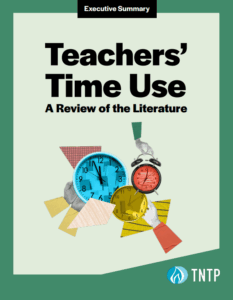The Supreme Court’s decision this week ending affirmative action, while expected, is devastating.
Given the makeup of the Court, it seems apt to bring up the seminal Reagan administration report, A Nation at Risk, which stated, “The twin goals of equity and high-quality schooling have profound and practical meaning…we cannot permit one to yield to the other either in principle or in practice.”
This decision, some 40 years after that report, will have profound and negative consequences for all Americans, especially students of color. As Justice Ketanji Brown Jackson underscored in her powerful dissent, “With let-them-eat-cake obliviousness, today, the majority pulls the ripcord and announces ‘colorblindness for all’ by legal fiat. But deeming race irrelevant in law does not make it so in life.”
The generational harm that is likely to result from this decision is immense. In the nine states where race-based affirmative action was already banned, enrollment of Black, Latinx, and Native American undergraduate students is headed towards a long-term decline. A ban at the national level will lead to diminished social and economic mobility for an unthinkable number of young people, while eroding our country’s ability to build the multiracial democracy we envision.
This decision is not only devastating, but it also defies common sense. Research shows that all students benefit from racially diverse learning environments. Yet higher education—the place where students are meant to be exposed to new thinking and experiences—will become more homogenous and less vibrant. This is a loss for all of us, as we won't benefit from the ideas, connections, and innovation that multiply in diverse institutions.
Affirmative action represented one of the necessary ways for children of color to climb over the barriers of enduring oppression for a chance to thrive. This decision likely means fewer graduates of color will be hired into the high-earning or middle-class jobs that lead to economic and social mobility, widening the racial wealth gap. And when higher education institutions, especially elite universities, become more homogenous, so too will legislatures, board rooms, and courts.
But we cannot allow this broken promise to break our resolve.
Advancing educational justice, especially in the face of adversity, is why TNTP exists. For 25 years, we have worked in hundreds of schools across nearly every state to counter the impacts of systemic racism in public education.
That work does not end when a student walks across the stage at their high school graduation. We know what happens in classrooms isn’t enough to ensure success for millions of students of color, especially as 13-year-olds in the U.S. post their worst math and reading scores in decades.
This ruling only deepens our conviction that the public education system needs to dramatically change and strengthens our resolve in the movement for education to truly be the “great equalizer” we deserve.








